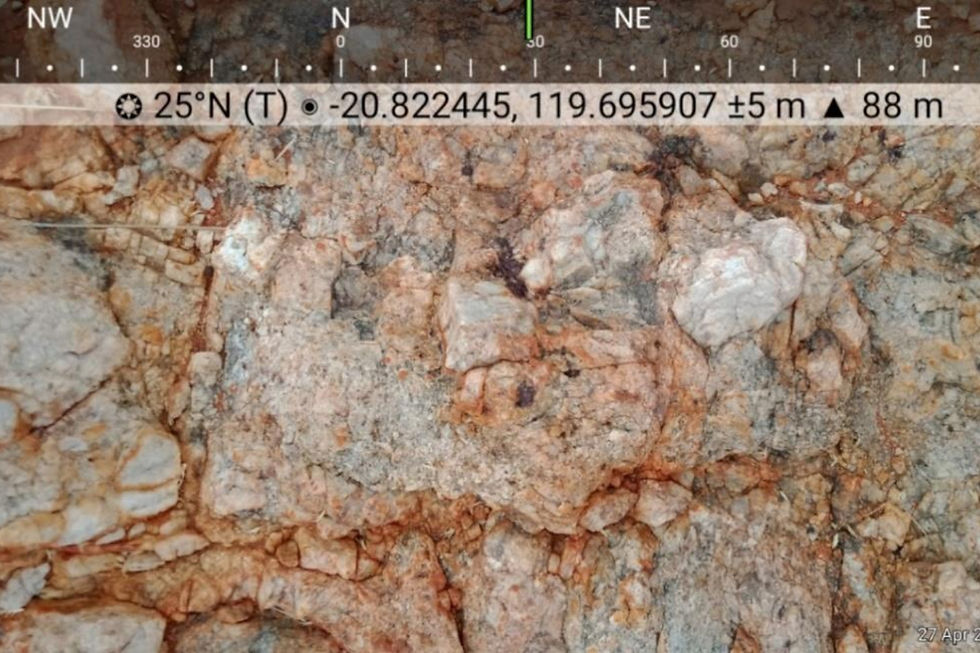Gold, nickel spikes for Askari Metals at Pilbara project
- Doug Bright

- Nov 22, 2023
- 2 min read
Updated: Mar 26, 2024

Askari Metals has jagged a high of 24.5 grams per tonne gold in one rock-chip sample from its Myrnas Hill project in Western Australia’s East Pilbara region, while soil samples yielded up to 2g/t, 1.37g/t and other lower gold and nickel spikes.
The company says the campaign also recorded elevated nickel responses of up to 1280 parts per million. More than 800 samples were taken from almost 75 per cent of its project area, with the highest gold grade found at the extreme north-west area of the exploration licence.
A further 684 soil samples were taken on a 200m-by-200m grid pattern and threw up the two widely-separated results going 2g/t and 1.37g/t gold. Depending on the environment and other technical considerations, soil gold results as low as one thousandth of those numbers (about 2 parts per billion) have justified calling in a drill rig, even back when the gold price was some 10 times lower than it is at present.
So, management has immediately reacted by closing up the sampling grid to 80m-by-20m in areas identified as being prospective by initial broader-spaced sampling.
This extensive phase of exploration activities at the Myrnas Hill Project has delivered highly encouraging results, enabling the Company to identify a number of high-priority gold and nickel targets. A follow-on exploration work program has been designed for 2024, including a high-definition magnetic survey and more detailed geological mapping and sampling over the identified nickel and gold prospects. This program has been an important first step at Myrnas Hill, allowing the Company to better understand the true value of this strategically located project. Askari Metals executive director Gino D’Anna
In the north-west of the exploration licence, other elevated soil gold responses thrown up by the latest work may reflect the proximity of the high-grade 24.5g/t and 1.37g/t rock results, with spikes of 73 parts per billion, 87ppb and 113ppb that could bear further examination.
Askari has subjected all of its samples to multi-element analysis and it has also identified scattered nickel anomalism exceeding 500ppm nickel, which it says correlates with the ultramafic rocks indicated by the geological map of the area. The maximum nickel grade identified in soil samples is 1280ppm nickel, with four other samples yielding results of more than 1000ppm. Additionally, 23 other samples gave results between 500ppm and 1000ppm nickel.
Nickel distribution appears to include the high-grade rock-chip and soil-gold area in the north-west of the licence, in addition to a string of elevated nickel responses in the centre-south of the licence. Analyses also identified elevated cobalt and chromium, which commonly correlates with nickel in some greenstones and more particularly in ultramafic rocks.
It may indicate nickel potential, but further exploration will be necessary to distinguish background nickel, cobalt and chrome values typical of the local greenstone suite and a potentially economic nickel host.
Askari is now considering follow-up work at Myrnas Hill that would likely include a high-definition magnetic survey and more detailed geological mapping and sampling through the nickel and gold prospects.
Is your ASX-listed company doing something interesting? Contact: office@bullsnbears.com.au


